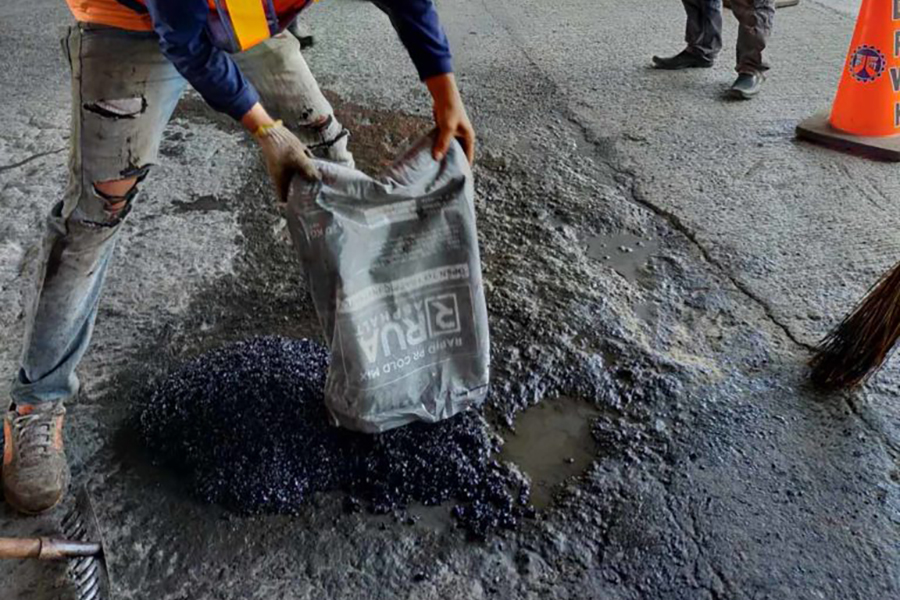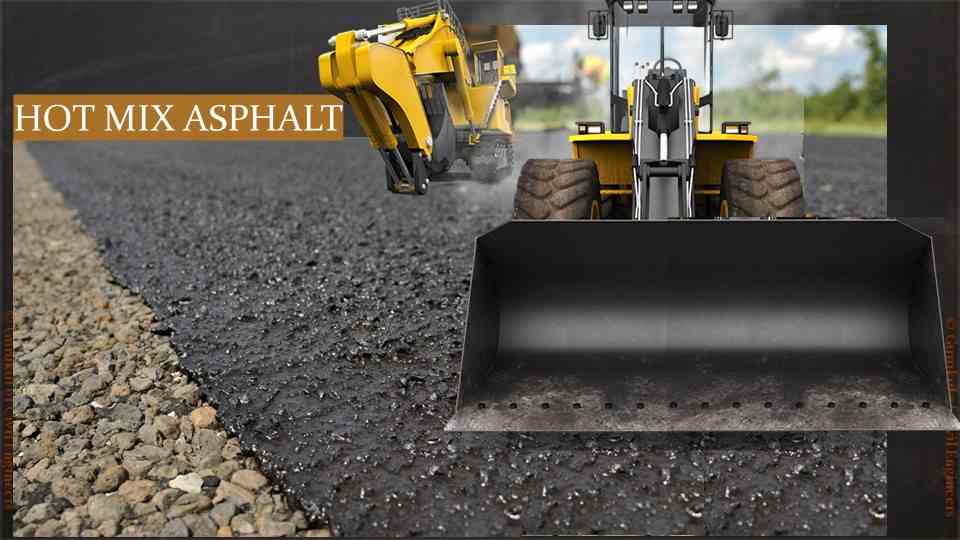Experience the Difference: Hot Mix Asphalt Paving for Regrading Projects
Experience the Difference: Hot Mix Asphalt Paving for Regrading Projects
Blog Article
Unlocking the Secrets of Hot Mix Asphalt Innovation
Checking out the depths of hot mix asphalt innovation discovers a world where precise processes and accurate formulations converge to shape our roadways and framework. The blend of fillers, binders, and accumulations isn't simply a building task but a tactical orchestration of sturdiness and effectiveness. As we peer into the intricate dancing of parts, a tapestry of durability and sustainability unfolds. What lies under this surface of asphaltic mastery, and what keys wait to be revealed in the realm of leading advancements?
Relevance of Hot Mix Asphalt
Warm Mix Asphalt plays a vital duty in modern-day infrastructure development due to its resilience and cost-effectiveness. As the most typically utilized paving product for roadways, freeways, and car park whole lots, Warm Mix Asphalt provides an array of advantages that add to its value in building and construction jobs.
The longevity of Warm Mix Asphalt originates from its make-up, which consists of accumulations, binder, and filler materials that are thoroughly selected and mixed to meet details efficiency needs. This exact combination results in a strong and adaptable pavement that can endure constant usage without considerable damage. Hot Mix Asphalt is 100% recyclable, further boosting its sustainability and environmental benefits. Overall, the significance of Warm Mix Asphalt in facilities advancement can not be understated, as it remains to be a foundation of modern building and construction methods.
Components of Asphalt Mixes
The structure of asphalt mixes includes carefully chosen accumulations, binder, and filler materials that are critical for achieving details performance requirements. Aggregates are the key component of asphalt blends, providing stamina and security. These aggregates can be natural, such as crushed rock or crushed stone, or artificial, like recycled products from old pavements. The binder, commonly bitumen or asphalt cement, holds the accumulations with each other and offers flexibility and durability to the mix. The choice of the binder is critical as it directly influences the mix's performance in various weather. Fillers, such as hydrated lime or Portland concrete, are used to improve the mix's workability and aging resistance. Angled Parking.
The combination and proportion of these elements play a considerable function in establishing the quality and performance of the asphalt mix. Designers carefully design the mix to satisfy details needs, thinking about aspects like website traffic volume, climate problems, and sidewalk life-span. Correct choice and balancing of aggregates, binder, and fillers are important for producing resilient, long-lasting asphalt sidewalks.
Combining and Manufacturing Techniques

When the accumulations are picked, the binder, often asphalt cement, is included in bind the materials together. The binder's quality and quantity significantly impact the mix's strength, resistance, and flexibility to environmental factors. In addition, fillers like moisturized lime or Rose city cement may be incorporated to boost details attributes of the asphalt mix, such as its workability or wetness resistance.
Throughout production, the aggregates and binder are warmed, typically in between 250-325 ° F(121-163 ° C ), to assist in mixing and ensure proper layer of the accumulations. The mixing procedure needs to be extensive to achieve an uniform blend that promotes the wanted efficiency qualities of the asphalt. Numerous methods, such as batch blending or drum mixing, are used to accomplish consistent and high-grade asphalt blends for building projects.
Variables Affecting Asphalt Efficiency
Elements affecting asphalt performance incorporate a variety of variables that impact the toughness, longevity, and general quality of asphalt sidewalks. One key aspect is the top quality of materials made use of in the asphalt mix. The type and source of accumulations, the binder quality, and the ingredients all play a significant function in establishing the performance of the asphalt sidewalk. The rank of aggregates is vital as it affects the mix's stability, resistance, and workability to cracking and rutting.

Ecological conditions also affect asphalt performance. Temperature level variants, wetness infiltration, and website traffic tons can all impact the architectural honesty of the pavement. Style factors to consider, such as sidewalk thickness and drainage, are necessary in making certain the long-lasting performance of the asphalt sidewalk. By carefully taking into consideration these factors, professionals and engineers can maximize asphalt efficiency and boost the life span of pavements.
Lasting Practices in Asphalt Modern Technology

Furthermore, the advancement of warm-mix asphalt (WMA) modern technologies has gotten grip recently. WMA enables the manufacturing and placement of asphalt mixes at lower temperature levels compared to conventional hot-mix asphalt, resulting in decreased energy intake and greenhouse gas exhausts. The use of porous asphalt blends can aid mitigate stormwater drainage problems by permitting water to penetrate with the pavement and into the ground, advertising natural water purification and reenergize processes. By implementing these sustainable methods, the asphalt industry can add to constructing a much more resistant and eco friendly framework network.
Verdict
In conclusion, hot mix asphalt innovation plays a critical function in modern-day facilities growth as a result of its longevity and cost-effectiveness. By carefully balancing elements, using correct mixing strategies, and considering different factors, engineers can create top quality asphalt mixes that stand up to hefty traffic lots and extreme weather. Embracing sustainable practices, such as making use of warm-mix modern technologies and recycled products, additionally enhances the ecological kindness of asphalt technology.
Mixing and production techniques in hot mix asphalt technology involve the exact mix and processing of aggregates, binder, and fillers to develop a high-performance and durable asphalt mix.Elements affecting asphalt efficiency include a variety of variables that impact the you can try here toughness, long life, and overall high quality of asphalt pavements. Lasting techniques in asphalt technology include various campaigns intended at decreasing the environmental influence of asphalt production and paving procedures. By incorporating redeemed asphalt pavement (RAP) and recycled asphalt tiles (RAS) into brand-new asphalt blends, the industry can dramatically decrease the usage of raw products and energy, while likewise reducing landfill waste.
WMA allows for the manufacturing and placement of asphalt blends at reduced temperature levels contrasted to standard hot-mix asphalt, resulting in decreased power usage and greenhouse gas exhausts.
Report this page